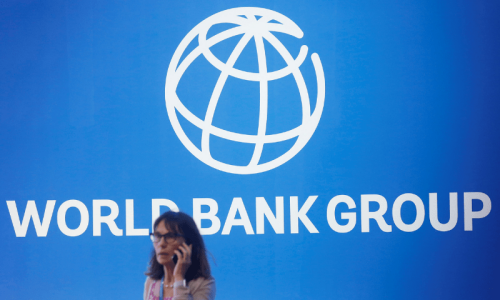For businesses around the world, quarter ends are usually a busy season. Sales teams are rushing to pump orders, marketing departments are trying to maximise reach their performance benchmarks and accountants are working to keep the books in order. It’s the adult version of pulling all-nighters to salvage exams after a semester of procrastination.
In financial institutions, this comes with a slightly different flair as some of the key performance indicators relate to the sale of not actual products but the line items on balance sheets. Consequently, there’s an opportunity to pump up numbers relatively easily, as long as you have liquidity from a few sources. A lot like when you are applying for a student visa and get that rich relative to deposit the required sum in the account as proof of income.
The technical term for this is “window dressing” — a practice that financial institutions have been engaging in since time immemorial. Typically, deposits and the asset base are the indicators of preference for the bragging rights they bring, but it can be anything. What happens is that bankers ofttimes turn to their friends in corporations or funds and seek short-term liquidity towards the end of the quarter.
However, the degree and type of window dressing at the end of September were a little different. Sure, a few funds and corporates may have placed a couple hundred billion in short-term deposits, but the more noticeable change was on the asset side, particularly in advances. According to the State Bank of Pakistan, loans to non-banking financial institutions (NBFI), such as microfinance or development finance entities, reached Rs446.4 billion — surging by Rs259.7bn in a single month. In other words, the increase was bigger than August’s outstanding amount.
With the return of the tax on failing to meet the minimum threshold of advances to deposits ratio, banks have gone on a lending spree
For context, the aggregate increase in net advances of microfinance banks between FY17 and FY24 has been Rs266.3bn — translating into a quarterly average of Rs9.5bn. Similarly, development finance institutions had a net loan book of Rs190.6bn as of June, having increased by an average of Rs4.1bn per quarter since FY17.
In simpler words, the NBFIs can’t absorb this much capital during a single month, at least for onward lending. So what’s happening here? Unfortunately, the story is both quite simple and familiar. In August, the tax on failing to meet the minimum threshold of advances to deposits ratio came back, which meant serious penalties for the sector as the figure stood at just 38.36pc by month-end.
Assuming the deposits maintain their past growth trajectory, they will reach Rs31.7tr by year-end. This means that the minimum advances by year-end to escape the tax altogether need to be at Rs15.85tr, compared to August’s Rs11.81tr. Thus began the effort to close the gap with just four months left.
To state the obvious, there’s no way banks could, or even would, lend Rs 4tr in such a short duration. So what can they do? Simple, turn to their less well-off buddies with smaller licenses and write them some big cheques, thus pumping the loans to NBFIs. In turn, those funds can be used by microfinance and development finance players to invest in government securities.
Remember, these are aggregate numbers with noticeable variance between banks. According to a previous analysis by Data Darbar, only four out of the 20 listed banks had an ADR of more than 50pc as of June. Now faced with the additional tax, the leadership seems to be doing whatever possible to get over the finish line, and one sure path is window dressing on steroids.
Data backs up this claim: between August and September, credit to the non-government sector increased by a total of Rs447bn, of which 60pc is made by loans to NBFIs. The remaining beneficiaries are probably the big corporates, particularly manufacturing which saw an uptick of almost Rs 80bn.
Funnily, this may not be the first time, either. The banks did the same back in December 2022, when loans to NBFIs helped improve the ADR by 423 basis points in a single month to avoid the tax, which was eventually deferred. Almost two years later, the playbook hasn’t changed at all and neither has the government learned anything.
The writer is the co-founder of Data Darbar
Published in Dawn, The Business and Finance Weekly, November 4th, 2024












































